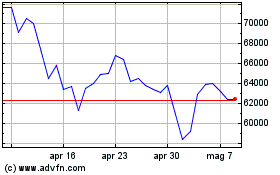

Opinion by: Brendon Sedo, Core DAO initial
contributor
Bitcoin is outgrowing the “digital gold” narrative. The
primary driver of
this shift is the rise of Bitcoin DeFi (BTCfi), which looks
beyond the mere store-of-value use cases.
In 2024, Bitcoin (BTC) became a natively
yield-generating asset and the centerpiece of Ethereum-style
decentralized finance ecosystems. 2025 is when that kindling can
grow its flame on innovative Bitcoin sidechains.
Most past attempts to tap Bitcoin’s value as a productive asset
required significant changes to its base layer. That’s a big reason
they failed. The Bitcoin layer 1 is not designed for much change,
leaving most Bitcoiners to merely hodl and not do much else. The
result is that Bitcoin remained underutilized as a network and an
asset.
Bitcoin sidechains have emerged as the perfect solution to all
these problems, scaling Bitcoin’s utility without altering or being
limited by the base layer. Naturally, these protocols will be the
most potent catalyst for BTCfi’s growth, especially with
BTC surpassing
$100,000, constituting over 60% of the
total crypto market share, and entering a new regulatory
landscape with the first “pro-crypto” US government regime.
Scaling Bitcoin, a productive asset
Per Hal
Finney, “Bitcoin itself cannot scale to have every single financial
transaction […] included in the blockchain.” That’s why there’s a
need for a secondary level of payment’ in his view.
For a long time, the blockchain space ignored Finney’s call to
action and prioritized innovation that isolated Bitcoin. However,
innovations previously limited to chains like Ethereum are now
crossing over to the world of Bitcoin. Sidechains,
rollups and other scaling solutions offer more options for holders
who want Ethereum-style utility while remaining aligned with
Bitcoin. This prepared the ground for BTCfi, where holders can
access a range of income-generating solutions like staking, lending
and derivatives.
The industry is, however, still in the early innings of this
revolution in Bitcoin. As of November 2024, merely 0.8% of its
circulating supply is utilized for DeFi use cases,
according to
Galaxy Digital. Out of Bitcoin’s roughly $2 trillion market cap,
less than $7 billion comprises BTCfi TVL.
While this may appear unencouraging, it highlights the massive
remaining opportunity. Bitcoin L2 infrastructure scaled 7x from
2021 to November 2024.
Recent:
Bitcoin DeFi TVL up 2,000% amid bumper 2024 for BTC
price, adoption
More importantly, it has accounted for a sizable share of new
liquidity flowing into BTC, besides institutional products like
exchange-traded funds (ETFs).
Even if the supply of Bitcoin in BTCfi platforms and sidechains
grows by 0.25% annually, the sector will have a total addressable
market of $44 billion to $47 billion by 2030, according to Galaxy
Digital. However, as Bitcoiners know, this is a conservative
estimate and would be accelerated by accelerating BTC price action
or even more Bitcoin DeFi adoption.
VCs, for one, have started to recognize the potential of Bitcoin
sidechains, investing over $447 million already, according to
Galaxy Digital. Of this, about $174 million was invested in Q3
2024, setting the stage for more explosive growth in 2025. More
funding for early-stage projects will ensure more successful
launches, innovations, choices for users, and overall
value.
As Bitcoin-native solutions provide access to productive use
cases for Bitcoin, users will no longer need to rely on trusted
intermediaries and Bitcoin-agnostic smart contract platforms.
Sacrifices that were necessary to expand the utility of Bitcoin in
the past will no longer be required. That can unlock substantial
value for principled BTC holders and even the Bitcoin network
itself.
Yields on Bitcoin for Bitcoin
So far, bridging to Turing-complete Ethereum Virtual Machine
(EVM) chains has been a go-to way to facilitate yields and other
financial use cases on Bitcoin. For example, the wrapped Bitcoin
(WBTC) market on Ethereum
is more than $10 billion. While solutions like WBTC have been
suitable for some, many Bitcoin holders prefer not to entrust
custodians with their capital or rely on chains like Ethereum,
which do not align with Bitcoin's consensus principles or support
the network at all.
BTCfi, defined by Bitcoin-aligned and Bitcoin-powered
infrastructure, is a solution from which both WBTC users and
Bitcoin purists can benefit. Users who are already accustomed to
Ethereum’s smart contract sophistication can continue to enjoy that
EVM experience while also growing closer to Bitcoin’s roots.
Principled Bitcoin users can get more options for their BTC’s
utility if the sidechain aligns with the base network.
Bitcoin holders also gain access to BTC derivatives superior to
Ethereum-native solutions like WBTC. Yield-bearing BTC derivatives
on Bitcoin-aligned sidechains are a 100x improvement, offering
self-custody and previously unavailable yield sources to Bitcoin
holders.
Overall, BTCfi can be much more significant. Not just compared
to where it is now, but also vis-a-vis EVM and SVM-based DeFi.
Bitcoin sidechains are already driving this shift, and will
continue to do so throughout 2025. All that is needed is the right
approach and consistency regarding development and product
pipelines.
For BTCfi, the path is clear: Deliver use cases with
product-market fit to Bitcoin holders on Bitcoin-powered platforms.
This will lay the foundation for generating even more value for the
Bitcoin community as a whole. And ultimately, there will be a
positive flywheel of Bitcoin adoption.
The institutional side led headlines in 2024. Now, it’s time for
the native, onchain camp to show its strength and
deliver.
Opinion by: Brendon Sedo, Core DAO initial
contributor.
This article is for
general information purposes and is not intended to be and should
not be taken as legal or investment advice. The views, thoughts,
and opinions expressed here are the author’s alone and do not
necessarily reflect or represent the views and opinions of
Cointelegraph.
...
Continue reading Bitcoin sidechains will drive BTCfi
growth
The post
Bitcoin sidechains will drive BTCfi growth
appeared first on
CoinTelegraph.
Grafico Azioni Bitcoin (COIN:BTCUSD)
Storico
Da Mar 2025 a Mar 2025

Grafico Azioni Bitcoin (COIN:BTCUSD)
Storico
Da Mar 2024 a Mar 2025
